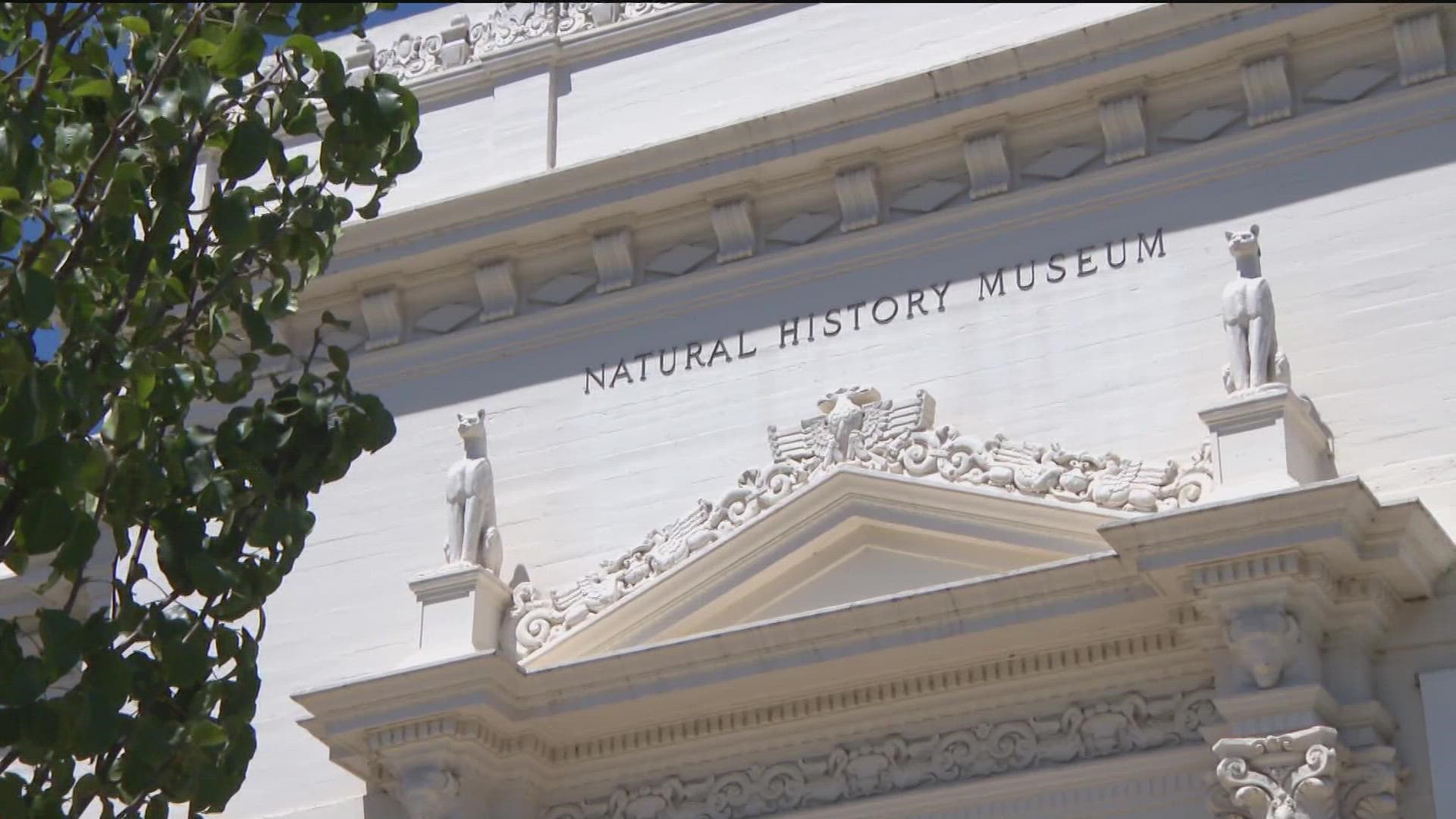SAN DIEGO — The unique biodiversity and natural history of San Diego is on display in the heart of Balboa Park. But the work at the San Diego Natural History Museum is not just about preserving the past.
Researchers are working to conserve and protect the health of our county's future.
We are not just talking about the exhibits; on our behind-the-scenes tour of the museum, we are also talking about the importance of the conservation research being conducted at The Nat.
On our first stop, Ari Hammond, Curator and Director of the Research Library, unrolled the original blueprints for the building you see in Balboa Park.
"Over here we've got the original 1933 plans that show how this planned to be a natural history museum," said Hammond.
The Natural History Museum in San Diego, which was designed after the Panama-California Exposition in 1916. This allowed people more access into San Diego and the building was constructed with Southern California wildlife in the details, for the most part.
"Bighorn sheep. I recognize that. Bear, okay. What else do we have? Looks like some swans there maybe, and then there's another sheep or ram in here. Some sort of dragons, I don't know. That's pretty cool. What were they thinking?" Hammond and I said, in a lighthearted exchange.
Ari and I had a good laugh about that one. Dragons or not, the original images of the earliest flora and fauna are captured on delicate glass behind the research library exhibit, for now.
The main goal is to digitize these thousands of images dating back to 1890s to 1930s to be online and stored in the biodiversity archive for everyone's viewing pleasure around the world.
"That is so cool, and how cool for conservation to see how things have changed over time," said Hammond.
On our next stop, we head to the Department of Birds and Mammals for a show and tell with Philip Unitt, Curator for this wing of the museum. From bats to birds, Philip details research finding of specimens relevant to Southern California including the Tri-color Blackbird.
"This species has been designated endangered by the State of California in just the last two to three years," said Unitt.
Environmental and industrial changes to their habitats have led to mite infestation and even strings being caught in their talons. In this department, conservation research is key.
"It may not be on other people's radar screen and can balloon into the effect of formally abundant birds becoming rare or dying out entirely," said Unitt.
Let's slither over to the Herpetology department to meet with Frank Santana, the Collections Manager.
"Amphibians are the cutest right? Oh, so cute," laughed Santana.
What some might not find cute is an impressive display in the basement of The Nat. It’s the home to the largest collection of rattlesnakes found in any natural history museum in the world.
Over 9,000 specimens are located here, dating back to the early 1900s. The research in this department can help to shape and understand our biodiversity.
"That benefits conservation too. So, if they are surviving in a different way, if they are eating a certain, different prey base now compared to hundreds of years old, maybe protecting that prey base and understanding how they interact with the environment now, keeps them from declining to the point where they don't exist anymore," said Santana.
From the future of our ecosystem to unearthing the past, Christopher Plouffe, the Lab Manager of the Paleontology department showed me around the lab, where every trace of our natural history is important from tiny teeth to the search for ancient predators.
The department has reproductions of predators, which include a Dire Wolf, already found in San Diego. But the search continues for more.
"There's a Sabre-toothed cat out in Anza Borrego. That's why we feel like it should be here. We haven't found it yet," said Plouffe.
From fossils to ancient plants, and I mean ancient, Dr. Jon Rebman, Curator of Botany for the Nat, shows off a Cobra Lily from 1876.
"But then the insect goes in this hole, that looks like a mouth, and they go down in here. But then they cannot go reverse because of the way the hairs are pointed," said Dr. Rebman.
Flies didn't stand a chance against this carnivorous species. While I didn't have time to look at even a quarter of the 300,000 plant specimens stored away, Dr. Rebman let this Southwest girl gently touch a collection of preserved cacti during the tour.
To bring it home, the exhibits at The Nat give you a look at the history of our ecosystem and biodiversity, but the research conducted by the team is also helping to shed light on our future.
"People are going to be here and wilderness is going to be here too. So, part of our work is very focused on making sure that those two things can co-exist," explained Cypress Hansen, the Science Communications Manager for The Nat.
For more information, check out their website at sdnhm.org
WATCH RELATED: San Diego Natural History Museum paleontologist celebrates Dinosaur Day (June 2022)

